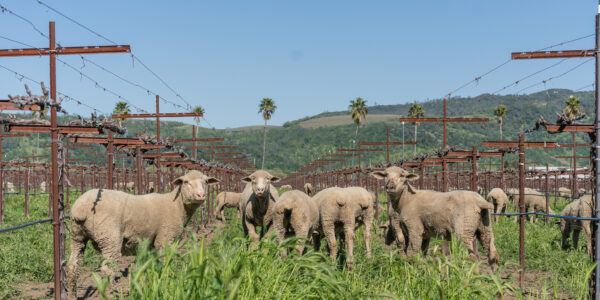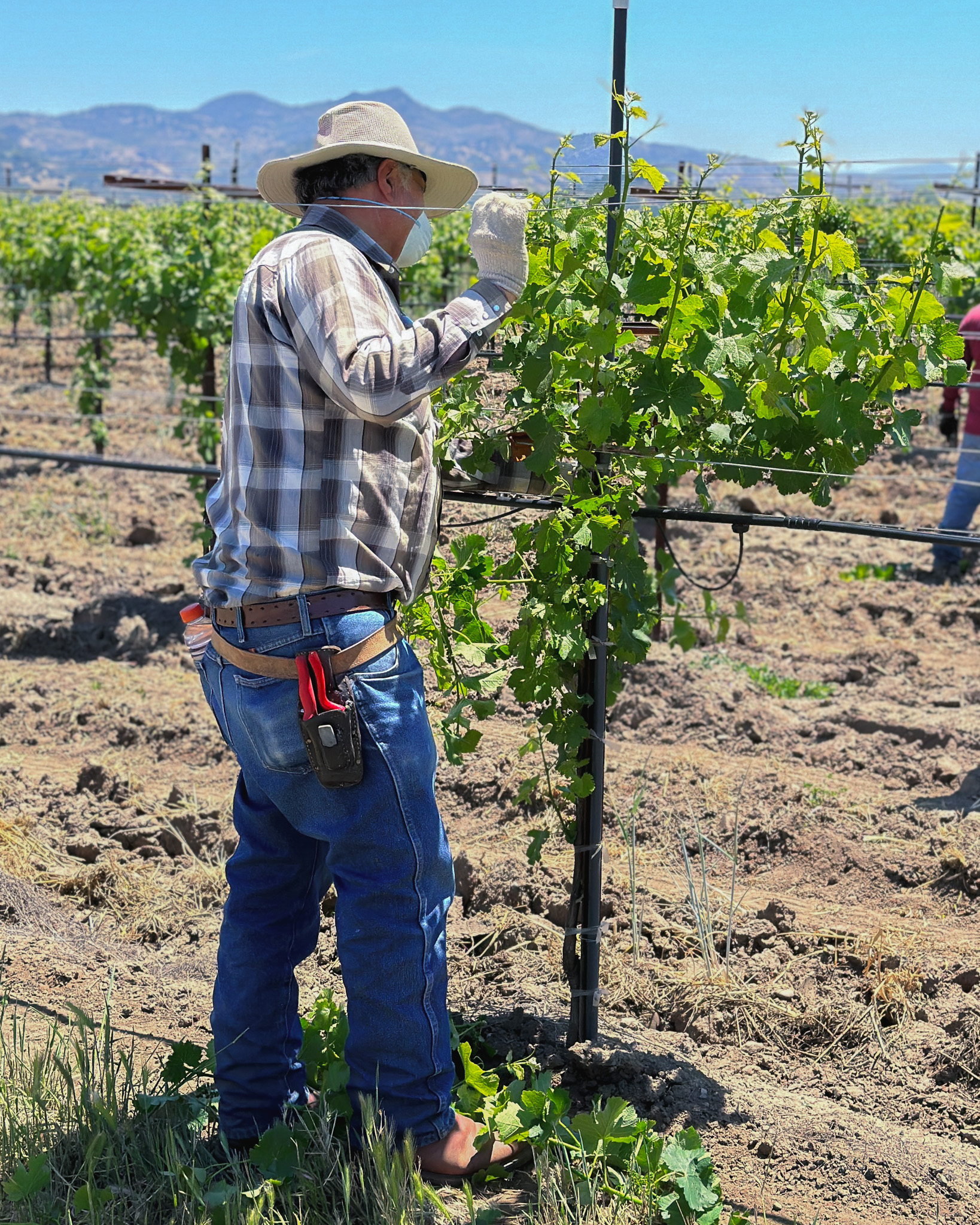As winter turns to spring, our vineyards begin to wake up to prepare for the next vintage. As we move towards summer, the action really picks up and we see the vineyards work in earnest to start crafting the our 2023 wines!
In winter, while the vines were dormant, our vineyard management team began pruning, starting with the older vines and working their way to the younger ones. This process takes several months and is completed just before bud break, which occurred on March 30th. Prior to bud break we also employed sheep to manage our cover crop; they reduce our carbon footprint by limited our need for tractors and provide the vines with natural nitrogen from the sheep’s manure, among other benefits.


This year, we received over 38 inches of rain in Rutherford, which is well above our historical average of 26-30 inches.This is great news for our vineyards, which experienced back-to-back drought years prior to this year’s rainy season. The extra water will help replenish our vineyards’ water-holding capacity and aquafers, and we expect to see above-average growth in our vineyards this year.
Our Nebbiolo block was the first to see bud break, followed by our Chardonnay and Cabernet Sauvignon block the following week — this put us about two weeks behind our historical average.
We are always looking for ways to improve our vineyard farming techniques to ensure we end up with the best quality fruit at harvest. One of these techniques is doing a late suckering pass, where we remove unwanted shoot growth. By allowing the unwanted shoots to start growing, we can sap some of the vine’s extra energy prior to fruit set, which helps the vines be more in balance when the grapes start to develop flavor concentration and color. Overall, we are excited to see our vines return to life after a long winter and cannot wait to share the journey of the 2023 vintage with you all!

